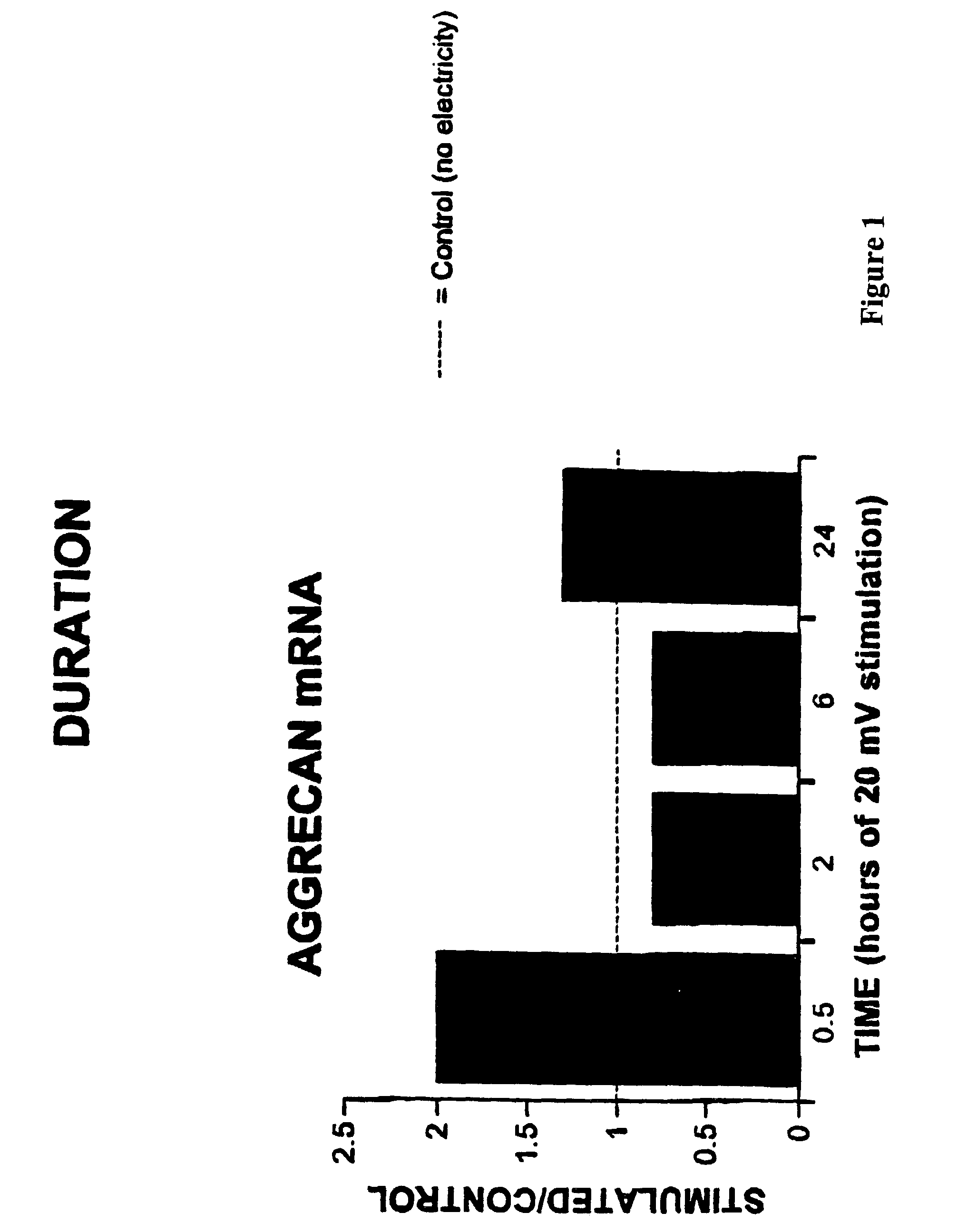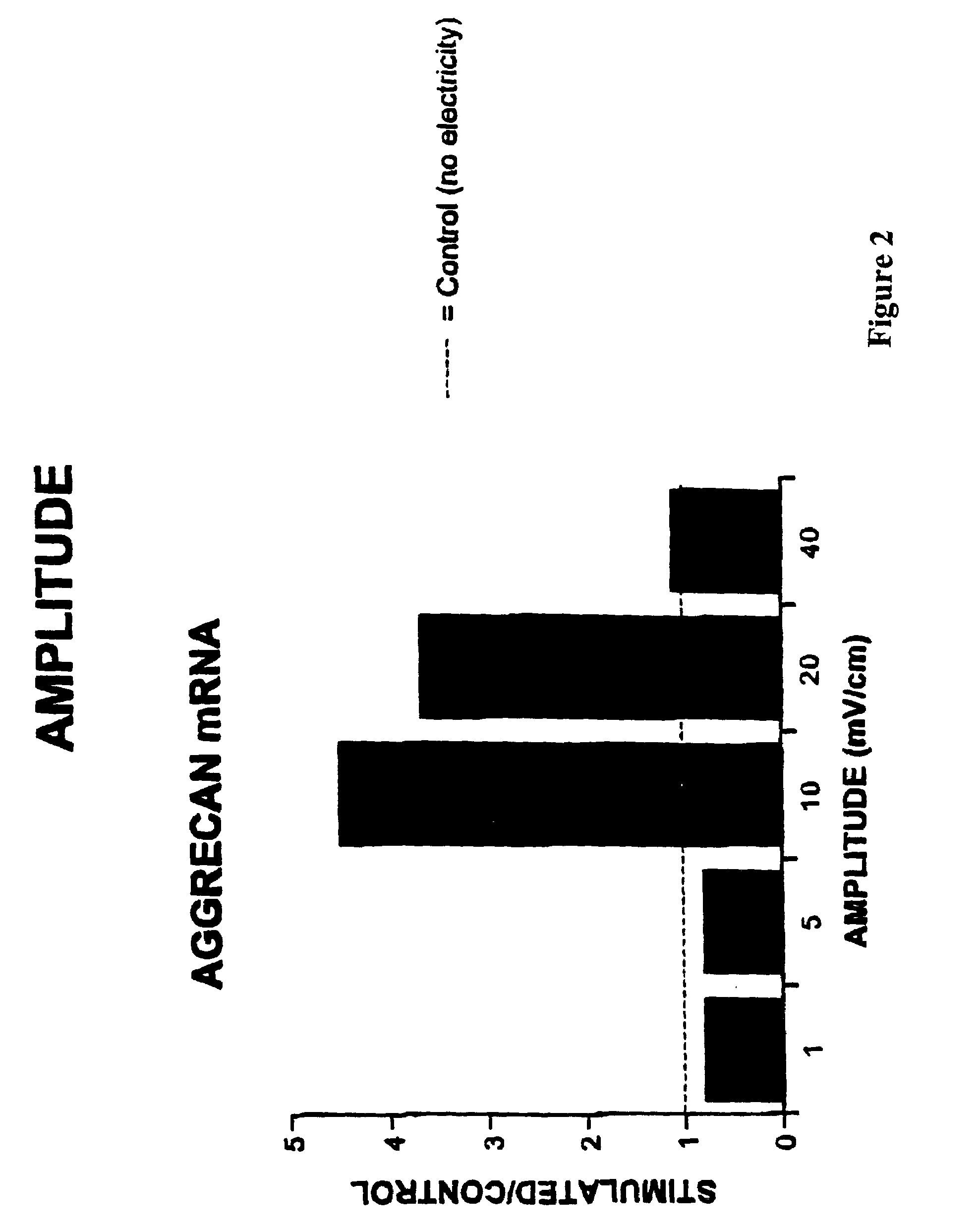Regulation of aggrecan gene expression using specific and selective electrical and electromagnetic signals
a technology of electrical and electromagnetic signals and aggrecan, which is applied in the direction of enzymology, biochemistry apparatus and processes, and may cause harm to patients, and achieves the effect of increasing the cellular production of aggrecan
- Summary
- Abstract
- Description
- Claims
- Application Information
AI Technical Summary
Benefits of technology
Problems solved by technology
Method used
Image
Examples
example
[0046]The invention is demonstrated in the following example, which is for purposes of illustration and is not intended to limit the scope of the present invention.
Materials and Methods
[0047]Chondrocyte cultures were prepared from fetal bovine articular cartilage. Chondrocytes (5×105 cells / cm2) were plated onto specially modified Cooper dishes. The cells were grown to seven days with the medium changed just prior to beginning of the experimental condition. The experimental cell cultures throughout these studies were subjected to a capacitively coupled 60 kHz sine wave signal electric field with an output of 44.81 volts peak to peak. This produced a calculated-field strength in the culture medium in the dishes of 20 mV / cm with a current density of 300 μA / cm2. Control cell culture dishes were identical to that of the stimulated dishes except that the electrodes were not connected to a function generator.
[0048]Total RNA was isolated using TRIzol, according to the manufacturer's instruc...
PUM
| Property | Measurement | Unit |
|---|---|---|
| electric field | aaaaa | aaaaa |
| frequency | aaaaa | aaaaa |
| frequency | aaaaa | aaaaa |
Abstract
Description
Claims
Application Information
 Login to View More
Login to View More - R&D
- Intellectual Property
- Life Sciences
- Materials
- Tech Scout
- Unparalleled Data Quality
- Higher Quality Content
- 60% Fewer Hallucinations
Browse by: Latest US Patents, China's latest patents, Technical Efficacy Thesaurus, Application Domain, Technology Topic, Popular Technical Reports.
© 2025 PatSnap. All rights reserved.Legal|Privacy policy|Modern Slavery Act Transparency Statement|Sitemap|About US| Contact US: help@patsnap.com



